Søren Jenry Petersen, Owner of Urban Jürgensen, on How to Keep a Haute Horlogerie Manufacture Relevant
How does a manufacture remain exclusive and high-end but still be relevant and competitive in today's market?

It isn’t the first time we take a look at watchmaker Urban Jürgensen. If you’re frequent readers of MONOCHROME, you know how special the watches made by this manufacture of Haute Horlogerie are. On a collector’s side, there is a lot to love here, from the superbly elegant designs, the insane attention to details (those hands…) or the beautiful movements. But… What is it like to run a company like this today? How does it keep such an exclusive, high-end production relevant in 2019? Søren Jenry Petersen, owner of Urban Jürgensen, answers our questions.
Xavier Markl, MONOCHROME – What is your first horological memory?
Søren Jenry Petersen – My very first sensation of a special watch, buying something I craved for a long time, was a rectangular Casio, with a case very much like an Apple today and an analogue hour and minute display on the top. On the bottom was a digital display. It had one of these typical 1980s thin steel straps. I was enamoured with the design of the piece. That’s the first watch I really cared about.

When did you get interested in mechanical watches?
That happened a lot later. At the end of the 1980s, I had learned enough about watches to understand that Rolex was something really special. I was working for Philips with mobile phones. During a business trip to the US, we came across a retailer in Kentucky and I bought myself a black and burgundy GMT II. I am waiting for them to reissue it so maybe I can buy the new one as the old one is with my son now. I thought “I now have the only watch I am ever going to need for the rest of my life…” you buy a Rolex and you’ve attained whatever you need to attain.
When Philips got acquired by Nokia in 1994, I began a very nice career at Nokia, leading their global product portfolio planning. I got involved in a lot of high-level meetings and events with clients, black tie events. I felt more and more out of place at these events with my steel Rolex professional watch. Everybody was dressed with a classic dress watch. I started investigating; you should aim at the best you can afford. I quickly learned that Patek Philippe was the top name. I was after a reference 5139 Calatrava, a 3 sub-dial perpetual calendar with a Clous de Paris bezel. I chased it for a number of years. But back in the mid-nineties you really could not find one. It was difficult, and with no internet and just brochures and small folders to go on.
At one point in 1996, when I was back in Denmark, I went to the Ole Mathiesen shop, a Royal purveyor and a Patek Philippe dealer in Copenhagen. I was met by a gentleman, now a close friend, Hans Ryser. As I inquired about the Patek 5139, he answered ‘you are lucky, I have one here’. I could finally see one in the flesh. It was everything that I thought… but he said ‘Unfortunately as you may have guessed – this piece is sold… but well, you were very specific that you wanted something really special – and I have something that might be of interest to you’.
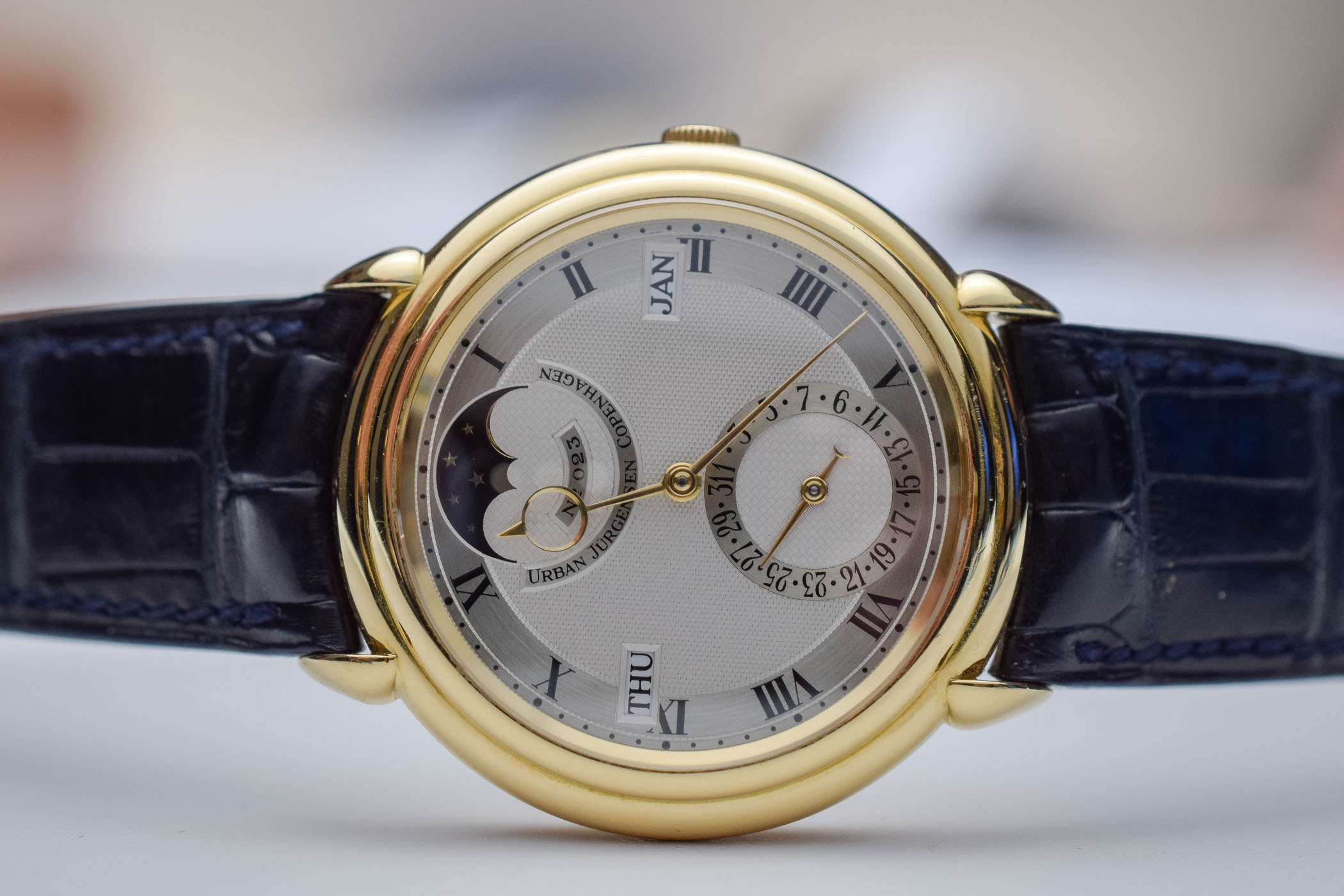
He brought out an Urban Jürgensen watch, a reference 2 in yellow gold. He gave me a loupe, and I was very puzzled because I could not figure out how this watch was made… I knew you could not make it with a machine, but I could not compute how anybody could make it by hand either. Things were so delicate and elaborate in the finest details. The moon disc, in particular, the sheer level of handcraft, skill, and sense of classic beauty that was in that piece were exceptional. I ended up buying that Urban Jürgensen. That was how I first got to know about the brand.
What led you from owning a Urban Jürgensen to buying Urban Jürgensen as a company?
Well – now I had two watches, and two watches is the start of a collection. I built up a collection and became quite knowledgeable about watches and the different brands. My collection grew to about 15-20 pieces and of good quality. I left Nokia in 2011 and worked as a consultant for a few years. By the fall of 2013, my oldest son was ready for a nice watch. We were back in the Ole Mathiesen shop. Ryser was there and asked me how I was doing after Nokia. I answered that I was pretty busy with consultancy. He answered, ‘how about a real job? Have you ever thought about buying Urban Jurgensen?’. This was one of those moments in a man’s life where everything kind of comes together in a very nice way. I had met Peter Baumberger (Editor’s note, the late owner of Urban Jurgensen) a few years earlier at a Patek event in Geneva. We had a long night, talking about all kinds of things. I did not know that he had died and Hans Ryser had been a long friend of Baumberger.
To make a long story short, I spent about four months looking at the situation of the industry, visiting the atelier. I met with Dr Helmut Crott (who ownied the company then) here in Biel. He was looking for a good home for the company. Naturally, he knew the legacy of the company and he was afraid that it would be snatched up by one of the large groups just for the patents on the detent escapement. Peter Baumberger and Derek Pratt, with the help of Jean-François Mojon at Chronode and Kari Voutilainen assisting for the prototyping work, had finally managed to develop a COSC-certified, Chronofiable-tested detent escapement for a wristwatch. A holy grail for centuries in the industry for the added precision. There was something here of immense horological value. Dr Crott wanted to ensure that the company remained an operating entity.
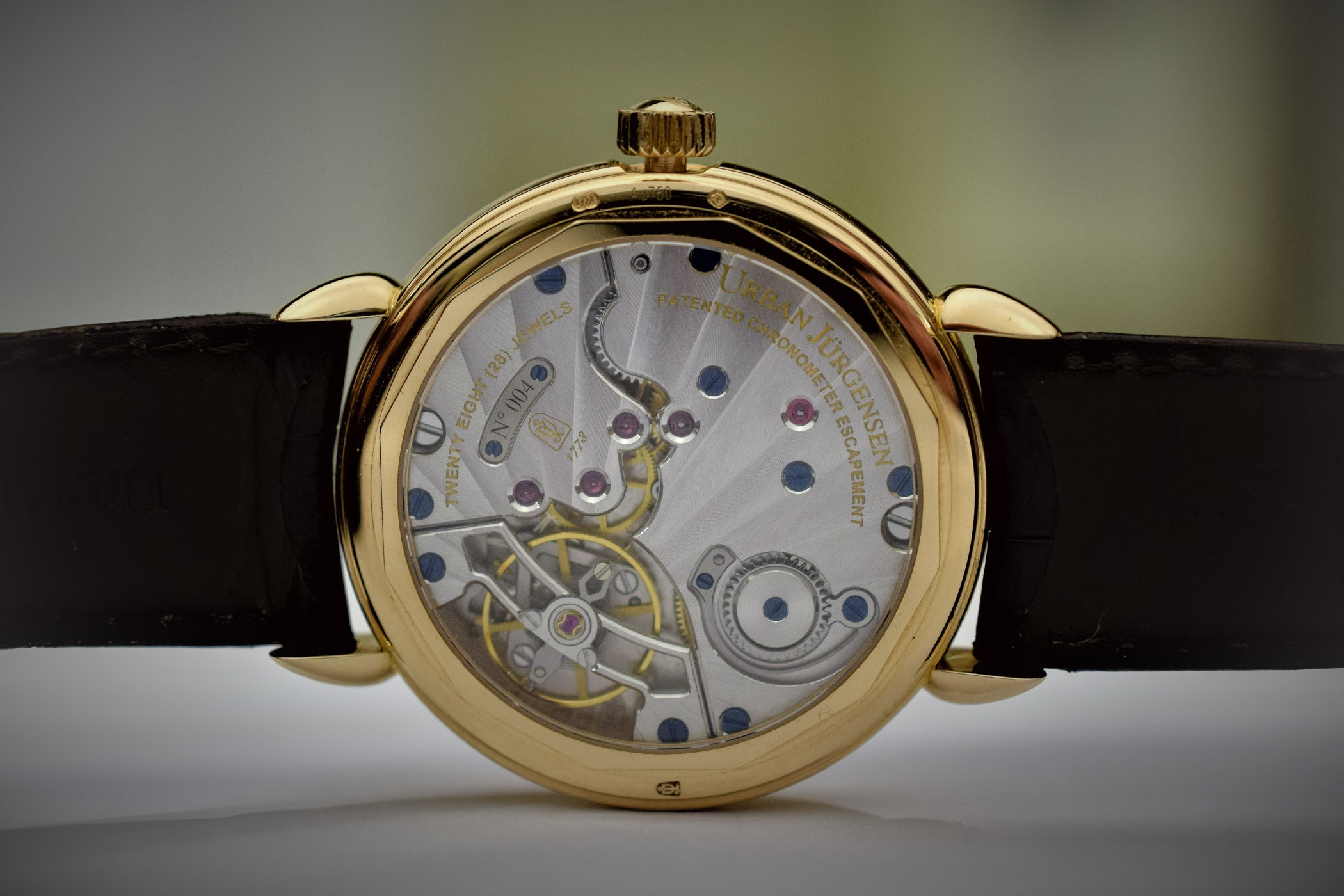
Urban Jurgensen had relevance, a flawless history, immense potential and was in actual fact the last continually operating watch brand with a legacy dating as far back as 1773. I found five other like-minded investors in Denmark. We ended up buying the company in November 2014 – the same month we won the GPHG men´s watch award for the Ref 1142 Detent Escapement piece.
What was your idea to keep the company relevant?
The whole rationale for building value in a company like this is that its legacy and current activity were one of ultimate, perfectionist classic watchmaking in a league where many players where slowly but surely drifting away. Luxury is two parts equal rarity and value. You must have both. For brands from large conglomerates, the luxury aspect is very difficult to maintain. They are not, in a sense, masters of their own destiny because they are caught on these big tectonic plates of publicly held company platforms that must continually grow, and their products become clones and rather common. Like “Limited edition 500 pieces”. At Urban Jurgensen, we are at a very different place.
Urban Jürgensen has not made yet a thousand wrist watches (note: Urban Jürgensen only started making wristwatches since Baumberger took control over the brand in the early 1980s). This is a true rarity. Our watches are very expensive because they are still very handmade. The position the company has had for 245 years is still relevant but it has to be protected, maintaining the handcraft and the exclusivity, maintaining the atelier format and not becoming a clone factory, working with the best, most talented artisans and partners. That’s what we continue to do, and it’s clearly visible in our products.
You presented a steel sports watch this year. How was it born?
Note: read our in-depth article about this new steel luxury sports watch here.
There is a market segment for robust, elegant, waterproof, multipurpose steel watches where the usual suspects designed by Gerald Genta in the 1970s have formed the identity of the category. That category identity really fully materialized in the past 10-15 years. I thought we could add our value to that category. It’s been 40 years since it was conceived in the 1970s and nothing much has happened since. A couple of years ago, I started working on this. This is a herculean task, and a process that must be managed and steered very carefully – or you just end up either copying (badly) or making something so desperately different it won’t hold up over time. The first aspect was that this type of watch had to have an automatic movement. Secondly, we should have our own movement. And then, I thought we were not going to play the thin dressy sporty watch card here. Working with extra-thin movements you have to make compromises, whatever they are. If we are making a luxury steel sports watch, it must be robust.
Then, understanding how to make this kind of new product in a revered category defined by the icons and Gerald Genta’s work in the 1970s was very awe-inspiring and scary… but the one hope I had was that with all the collectors and people who came to us, I have always got an abundance of questions that were along the lines of ‘do you have anything in steel…. – are you going to make anything in steel?’
If you have a pure level of origin of thought, that is strong enough, you can develop something that becomes a balanced design. I wrote a design brief and shared the challenge with about 15 of my old designer friends – and one of them reacted back within 20 minutes of receiving the file telling me ‘I don’t know much about watches but they are all round, the earth rotates around the sun, it’s all round.’ So I played around with a bunch of circles. Out of that simple sketch came the DNA for the Jurgensen One collection. The concept was very good as a starting point.
I then worked with a design house here in Switzerland and we turned it into a 3D case. The last big missing piece was the steel bracelet. I was after a distinctive 10-metre recognition factor – and this comes from the bracelet. I was scribbling with circles across the concept drawing and suddenly I got these central, oval interlinks. With one of the best bracelet makers in the industry – and working very hard to realize the design to perfection – we turned it into the bracelet we have today and it’s been received extremely well.
That’s how the whole thing came about. We started with a three-hander and I wanted to do a GMT version, which came out of my travel experience from my Nokia days. For 15 years I travelled about 120 days a year. I wanted to make a GMT watch that worked the way it should for frequent travellers. I have 5 GMT watches in my collection, and none of them works really right. On the ONE GMT, you have a 24h sub-dial which always shows your home time. You do not need a day-night indicator since it is 24 hours. It also is the reference for midnight date change when setting the time. The local time then is the central 3 hands – because one of the great sins of many GMT watches is that when you travel – all of a sudden you should look somewhere else for the time. Not OK. You have plus and minus correctors for the central hour hand and obviously, the top one is plus and the bottom is minus. That’s all you need to do, and you can do this without even looking at the watch!
The ONE Collection has been super well received, and I think part of the reason is that the ONE is still done with lots of handcrafted details not found in any other models in the category. Hand-finished hands with centre canons, hand-finished movements and use of surgical steel to name a few. We tried to combine the background of the brand with our desire to bring something truly new in the category – and the demand has been phenomenal.
More details at www.urbanjurgensen.com.

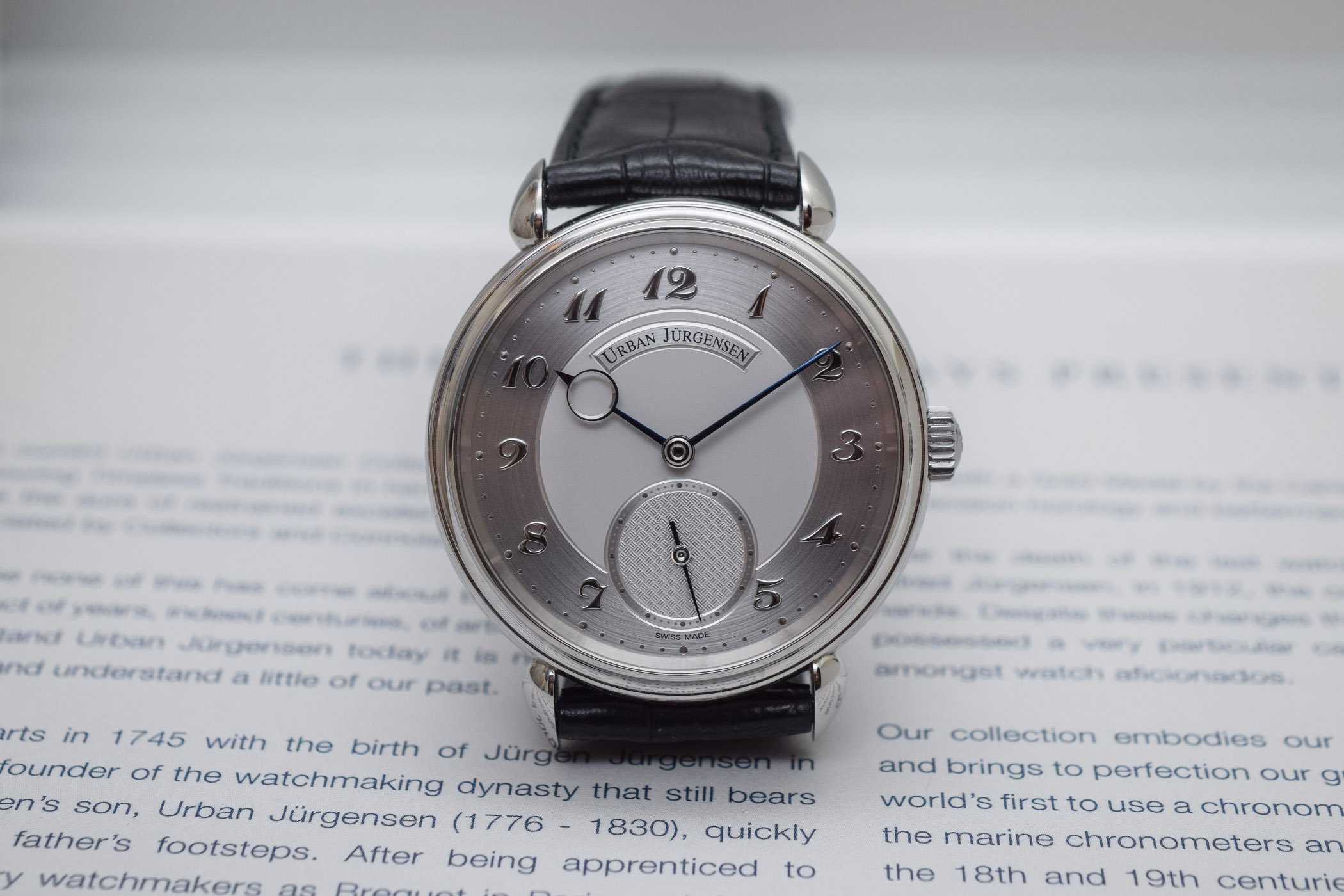
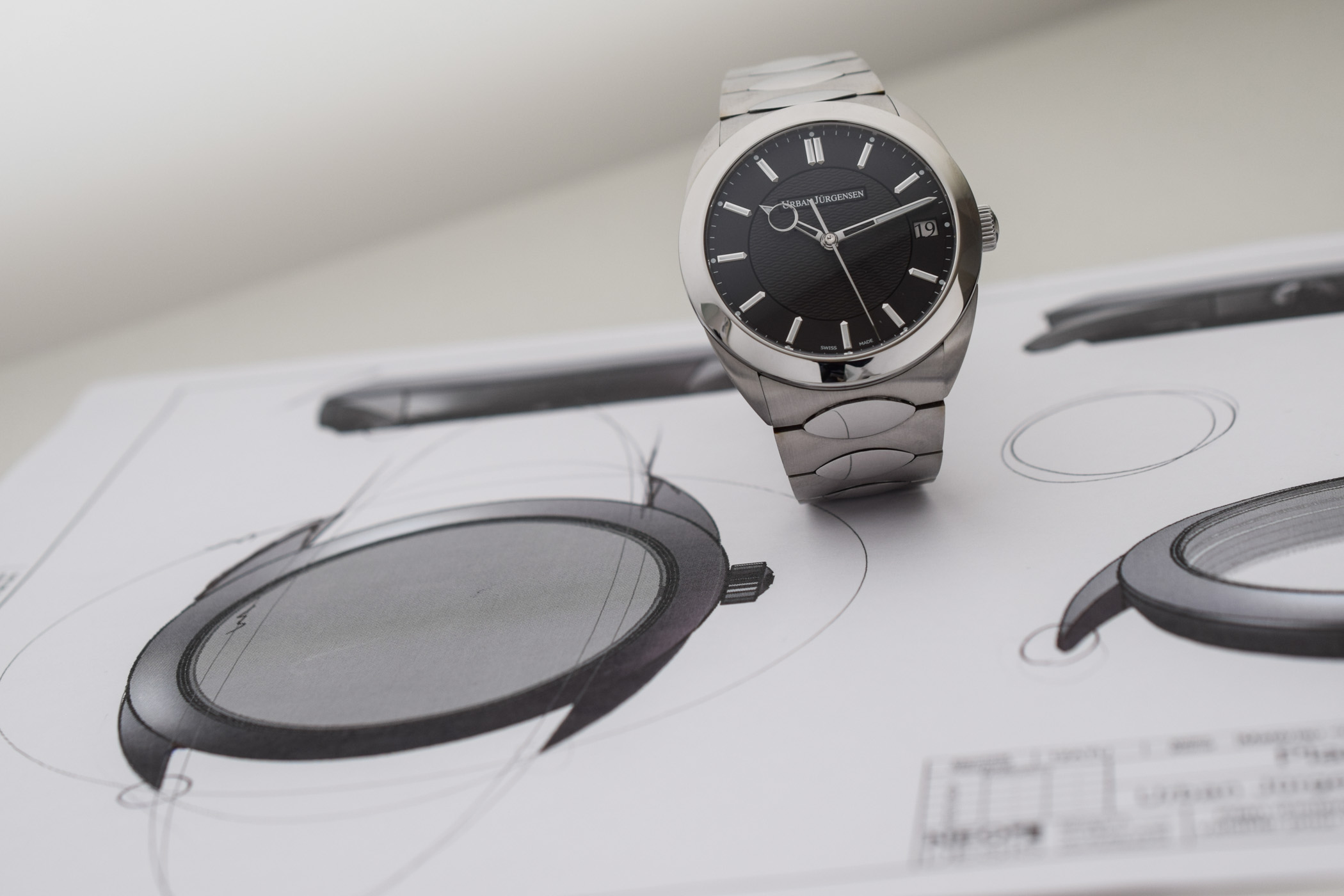
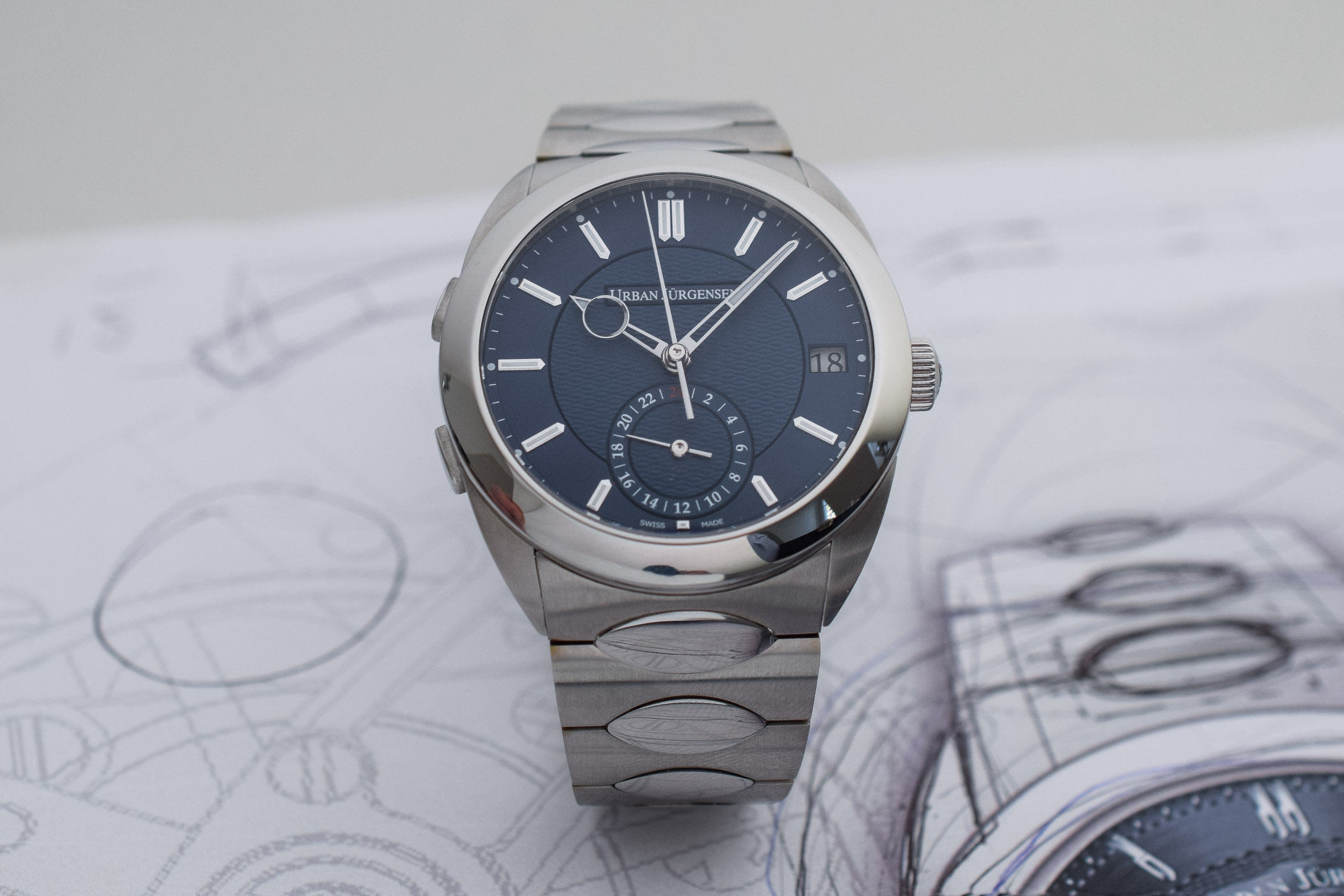



2 responses
UJ is one of my favorite brands and I own one with much love.
They’ve made less than a thousand watches in nearly 40 years?!! I knew they had low production, but that makes each piece seem very special. They’re right at the top for dress watches in my opinion – I’m sure their ‘One’ will do well, too. Just can’t believe they didn’t make a round or oval date window to keep the theme (mind you, they probably tried it and it looked wrong).